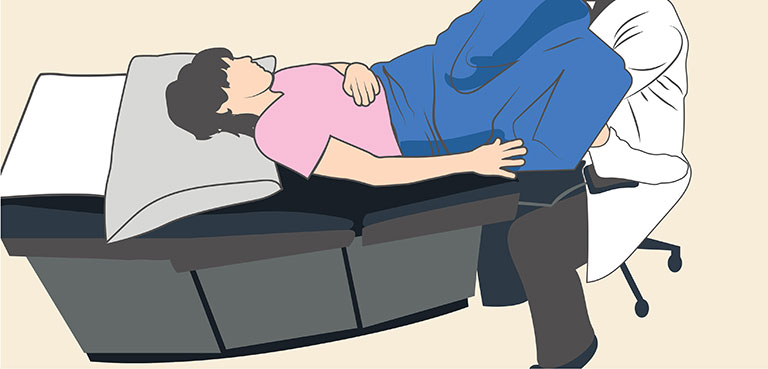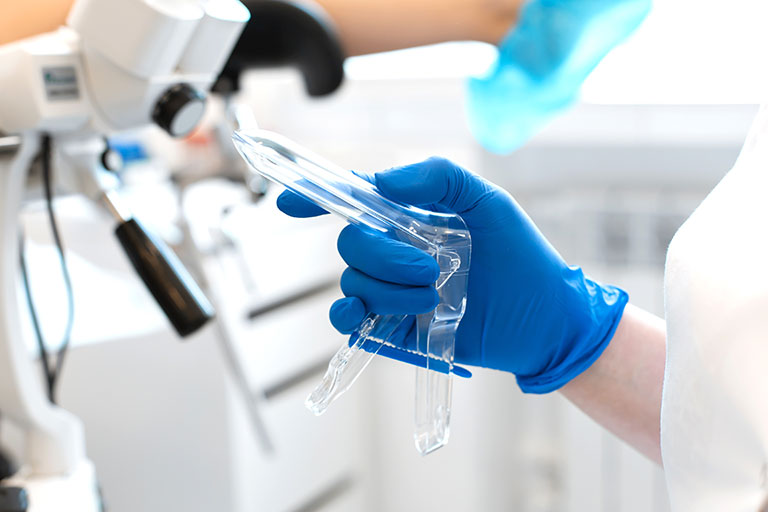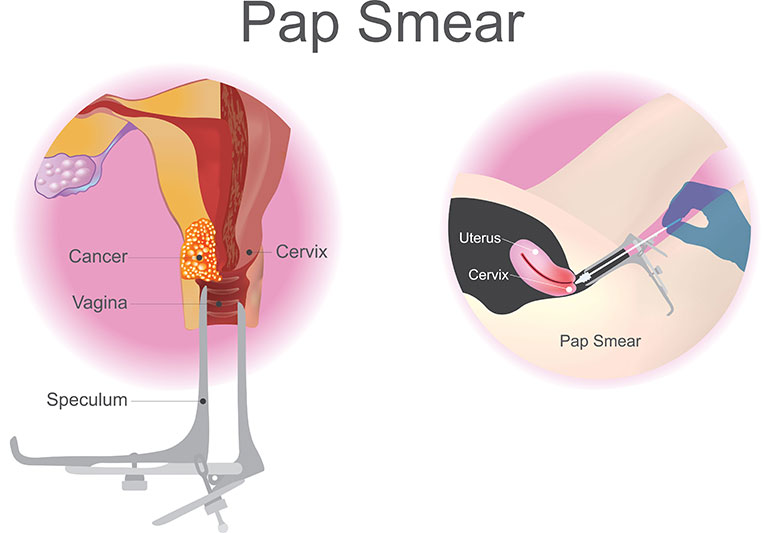What is a COLPOSCOPY
Private Colposcopy London
Colposcopy is a medical procedure that is used to examine the cervix, vagina and vulva. It is a medical diagnostic procedure that detects pre-malignant lesions and malignant lesions in the female reproductive organs. Colposcopy is usually carried out when cervical screening detects abnormal cells in your cervix.
The cells that are detected through Colposcopy are not harmful and are likely to go away without treatment; however, there is a risk of the cells developing into cervical cancer if left untreated. Through this medical diagnostic procedure, abnormal cells in the cervix can be confirmed. This would determine the treatment needed to remove them.
INDICATIONS FOR COLPOSCOPY
- You might be required to have a Colposcopy in London a few weeks after cervical screening if:
- Abnormal cells are detected in your cervical screening sample
- Your cervix appears unhealthy
- A clear result was not gotten after several cervical screening tests
- Colposcopy can be carried out to identify the cause of unusual vaginal bleeding.
Being referred for a Colposcopy does not necessarily mean that you have cancer. Therefore, you should try not to worry when you are referred to a Colposcopy clinic; it is very unlikely that the abnormal cells detected in your cervix would get worse.

WHAT TO EXPECT DURING A COLPOSCOPY
A Colposcopy is usually performed in a Colposcopy clinic. The diagnostic procedure should last about 15 to 20 minutes, and you can go home afterwards.
During Colposcopy
- It would be required of you to undress from the waist downwards. You would not need to remove a loose skirt, so you might choose to wear a loose skirt to the colposcopy clinic.
- A chair that is specially padded to support your legs will be needed for you to lay on.
- A speculum will be carefully inserted into your vagina.
- Your gynaecologist will then illuminate your cervix with a microscope to view your cervix. This microscope will not be inserted into your body.
- Special liquids will then be applied to your cervix to highlight all the abnormal areas therein.
- A biopsy (a tissue sample) may be scraped off for further laboratory investigation. If abnormal cells are detected in your cervix, immediate treatment might be required to remove them. Your biopsy results will reveal abnormalities if the colposcopy test is unclear.
Women’s Health is our Passion
Live life to the fullest with our range of Consultant-led Gynaecological services.
BOOK ONLINE NOW
it's easier, quicker and only takes 30 sec
COLPOSCOPY RESULTS
Although your biopsy result can take up to four to eight weeks, it is possible to identify abnormal cells in your cervix through colposcopy. The result of both the colposcopy (which was carried out in a colposcopy clinic) and biopsy (examined in a laboratory) is recorded as being normal or abnormal.
- Normal Result: 4 out of 10 women have normal cells. It is recommended that they continue to attend cervical screening.
- Abnormal Result: About 6 out of 10 women are confirmed to have abnormal cervical cells and may need prompt treatment to remove them.
Your health practitioner in a private colposcopy clinic London may use the term CIN or CGIN to express your biopsy result. These are the medical terms for abnormal cells. The term is usually accompanied by a number ( for instance, CGIN 2) to indicate the chances of developing cervical cancer. The higher the number, the higher the risk of developing cancer if the cells are not removed.
TREATMENTS TO REMOVE ABNORMAL CERVICAL CELLS
It is recommended to remove the abnormal cells if there is a possibility of developing cancerous cells if not treated. There are quite a number of simple and effective treatments for the removal of abnormal cells in the cervix.
Colposcopy: What to Expect
Colposcopy is a medical diagnostic procedure that is usually carried out in a colposcopy clinic. Many prefer to visit a private colposcopy clinic to get their colposcopy done. The average time to get colposcopy done typically takes up to 20 minutes.
PREPARATION
- You should avoid sex or the use of vaginal medications, tampons, creams or lubricants at least 24 hours before you visit the colposcopy clinic for your appointment.
- You need to come along with a panty liner as there are chances that you might have light bleeding after the procedure.
- Colposcopy does not restrict you from eating and drinking as usual.
- You might want to contact your private colposcopy clinic in London if:
- You realise your menstruation might commence around the time of the procedure. Your healthcare provider will determine whether you would still have the procedure or perhaps, postpone it till after your period.
- You are pregnant. It is essential to inform your doctor and nurses that you are pregnant because biopsy and treatments will have to be withheld till few months after delivery. Colposcopy is, however, safe during pregnancy.
- You want to state your doctor preference for the procedure (that is, you might prefer a female or male doctor/nurse).
- You can come to the colposcopy clinic with your partner, a family member or a friend if that would keep you at ease.
THE PROCEDURE
Colposcopy is a diagnostic procedure that is carried out by a specially trained healthcare provider called a colposcopist.
DURING COLPOSCOPY
- Undressing from your waist down would be required. You would not need to remove a loose skirt, so you might choose to wear a loose skirt to the colposcopy clinic.
- You will have to lie down on a specially padded chair to support your legs.
- A speculum will be carefully inserted into your vagina. This is similar to a cervical screening test.
- The Colposcopist will proceed to illuminate your cervix with a microscope (colposcope) to view your cervix. This microscope will not be inserted into your body; instead, it will be placed at about 30 cm away from your vagina.
- Special liquids will then be applied to your cervix to highlight all the abnormal areas therein. You might feel a burning or tingling sensation when the special fluids are applied.
- A biopsy may be scraped off for further laboratory investigations. You might feel a slight stinging or pinching sensation, but it shouldn’t be painful.
AFTER A COLPOSCOPY PROCEDURE
- You can go home after the procedure, or as soon as you feel better.
- Your daily activities will not be affected. You can resume your daily activities immediately, such as driving and work. You can, however, prefer to rest at home for the rest of the day.
- You may experience light bleeding or brownish vaginal discharge for about 3 to 5 days after the colposcopy or biopsy.
- Do not have sex while still bleeding. Wait till the bleeding stops before you have sex or make use of tampons, vaginal creams, medications or lubricant.
- You might need to wait for a few weeks to receive your biopsy result from the laboratory.
SIDE EFFECTS OF COLPOSCOPY
Colposcopy is very safe and causes no serious health problems. It is rare to experience severe side effects. Some women might, however, experience the following:
- PAIN OR DISCOMFORT: If you find the procedure painful or discomforting while it is being carried out, inform your colposcopist.
- LIGHT BLEEDING: Light bleeding can occur after a biopsy is done. It should not last more than 5 days.
- BROWNISH VAGINAL DISCHARGE: This discharge is caused by the special liquids that are applied to highlight all abnormal cells in the cervix. The vaginal discharge shouldn’t last long.
If these side effects become persistent and intense than usual, you need to contact your healthcare provider.
Colposcopy: The Results

After the diagnostic procedure, your colposcopist might outrightly tell you what they’ve found. You might have to wait for 4 to 8 weeks for your biopsy result. Outlined below are the meanings of the different results:
NORMAL RESULT
4 out of 10 women who undergo colposcopy have normal result. This means that the cells in the cervix are found normal during the colposcopy and biopsy. This means you do not need immediate treatment.
You will, however, be advised to keep to your cervical screening appointments for early detection of abnormal cells which might develop later. Depending on your age, you might be invited for a follow-up cervical screening appointment in 3 to 5 years.
ABNORMAL RESULT
6 out of 10 women who undergo colposcopy have abnormal cervical cells. This is referred to as Cervical Intra-Epithelial Neoplasia (CIN) or Cervical Glandular Intra-Epithelial Neoplasia (CGIN). This does not mean that you have cancer, but there is a high probability of the abnormal cells developing into cancer if not treated.
Abnormal cells in the cervix may be detected with a colposcope; however, a biopsy is needed to determine the risk for cancer and the necessary treatment.
Abnormal biopsy results can be expressed as thus:
- CIN 1: The abnormal cells are unlikely to become cancerous and might go away without treatment. You will be advised by your colposcopist to visit the clinic in 12 months for a follow-up cervical screening test.
- CIN 2: There is a moderate chance of the abnormal cells developing into cancerous cells. Your doctor will recommend some treatments to get them removed.
- CIN 3: There is a high risk that abnormal cells will become cancerous. Specific treatments will be recommended to remove the abnormal cells.
- CGIN 4: There is a very high chance that the abnormal cells in the cervix would develop into cancer and immediate treatment will be required to remove them.

Colposcopy: Treatments
Certain treatments will be recommended if abnormal cells are found in your cervix. There is a need for prompt treatment because abnormal cells have the tendency of becoming cancerous. These treatments are aimed at removing the abnormal cells that were found during colposcopy. Care is taken to minimise damage to healthy tissues in the cervix. The affected area to be removed is usually about the size of a fingertip.
TIME FOR TREATMENT
Treatment can be done concurrently with the colposcopy procedure. This is usually done in the colposcopy clinic if the abnormal cells are detected during colposcopy. In some cases, treatment won’t be done on the same day. This is usually the case when you have to wait for your biopsy result.
TYPES OF TREATMENT
The main treatments used for the removal of abnormal cells in the cervix include the following:
- LARGE LOOP EXCISION OF THE TRANSFORMATION ZONE (LLETZ): Large Loop Excision of the transformation zone (also referred to as loop diathermy, loop cone, loop excision or loop biopsy) is the most common treatment used for the removal of the abnormal cells in the cervix. LLETZ involves the use of a thin wire loop to remove the abnormal cervical cells. The loop is usually heated with electric current for the removal. It is usually carried out on the same day as colposcopy under the effect of a local anaesthetic agent which would be injected into your cervix. There is no need to spend the night in the hospital after the procedure.
- CONE BIOPSY: It is a less common treatment used to remove abnormal cervical cells. Cone biopsy is a minor surgical procedure used to cut out a small piece of cone-shaped cervical tissue that contains the abnormal cells. It is only carried out when there is a large area to be removed. Cone biopsy is usually carried out in a colposcopy clinic under the effect of general anaesthesia, and you will be required to spend the night in the colposcopy clinic.
- OTHER TREATMENTS: The following are treatments that can also be used to remove abnormal cells in the cervix:
- Cryotherapy: This involves the use of ice to freeze and destroy the abnormal cells in the cervix. Cryotherapy is used to treat minor cells changes only.
- Laser Treatment: A laser is used to destroy abnormal cervical cells.
- Cold Coagulation: This requires the use of a heat source to burn away the abnormal cervical cells.
- Hysterectomy: This is the total removal of the womb. It is a more complicated treatment that is only opted for when the abnormal cells are severely abnormal and not responsive to other treatment.
AFTER TREATMENT
- You can go home to rest after the treatment except in some cases where you have to spend the night in the colposcopy clinic for close observation.
- You would be able to return to your normal daily routine after the treatment. You might, however, choose to rest for the rest of the day.
- You will have to adhere strictly to the following rules:
- Avoid sex for 4 weeks
- Do not use tampons for 4 weeks
- Avoid exercises while there is still bleeding or vaginal discharge.
- Do not drive within the first 24 hours if general anaesthesia was used.
- You would be expected to visit the colposcopy clinic at 6 months after treatment for a follow-up cervical screening test.
- You will also be expected to test for human papillomavirus (HPV). If HPV is absent, you won’t be required to have cervical screening for another three years. If HPV is found, you would be required to do another
SIDE EFFECTS AND RISKS OF TREATMENTS
The most common side effects associated with removal treatment include:
- Mild pain that can be likened to period pain which should last for a few hours. The pain can be relieved with paracetamol.
- Light vaginal bleeding which could last for up to 4 weeks.
- Brown vaginal discharge which is watery. This should stop within 4 weeks.
Some severe complications are also associated with treatment; they include:
- Infection: This could lead to heavy, persistent bleeding and foul-smelling vaginal discharge. You might also experience persistent abdominal pain due to the infection.
- There is increased risk of premature birth in future pregnancies most especially if you would be required to have repeated treatments or several tissue removals.
Fortunately, the benefits of the removal treatment are more than the risks. You can express your fear to your doctor or nurse before the commencement of the treatment.
Where to Get Help
Gynae Clinic is a leading private colposcopy clinic in London where you can get your colposcopy procedure done. At our colposcopy clinic situated in Harley street, London, our consultant gynaecologists are available to take you through the colposcopy procedure and the treatment regimen.
If you want to get more information about colposcopy London, do not hesitate to call us at 020 71831049. You can also walk into our private colposcopy clinic situated at Ground Floor, 117A Harley Street, Marylebone, London W1G 6AT, UK.



 Make an Appointment
Make an Appointment
 Visit Us
Visit Us